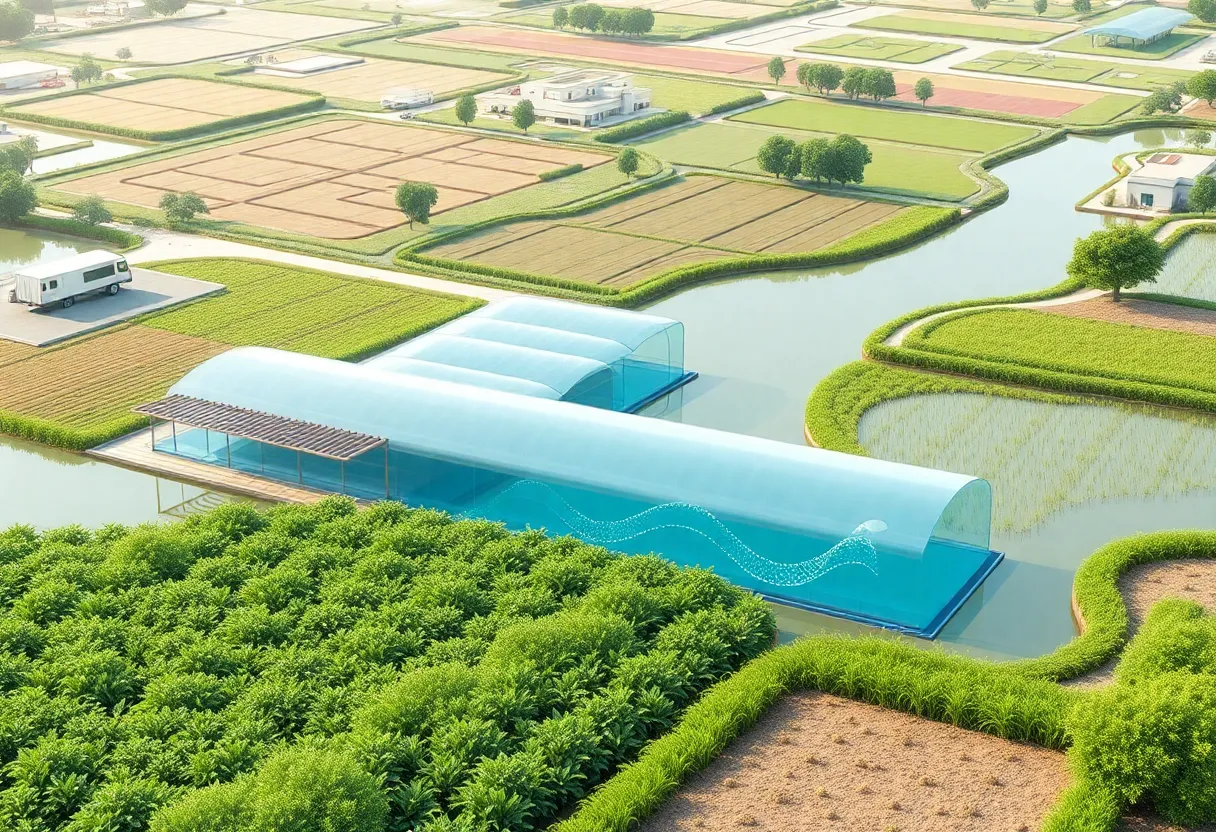News Summary
A new model combining Building Information Modeling (BIM) and neural networks has been developed to improve cost predictions for agricultural water conservancy projects. Utilizing the Sparrow Search Algorithm, the model has demonstrated a remarkable accuracy with a maximum relative error of only 2.99%. Real engineering data from Liaoning Province bolstered its effectiveness, achieving a Root Mean Square Error of 0.1358 and an R2 value of 0.9819. This innovative approach not only facilitates dynamic cost management but also supports sustainable development in agricultural systems.
Innovative Model Enhances Accuracy of Construction Cost Predictions for Agricultural Water Conservancy Projects
Accurate construction cost prediction has become increasingly critical for agricultural water conservancy projects, which often face complex conditions and uncertainty. To address this challenge, researchers have developed an innovative cost prediction model that integrates Building Information Modeling (BIM) with a neural network optimized by the Sparrow Search Algorithm (SSA). This groundbreaking approach aims to provide more reliable cost estimates for project stakeholders.
Importance of Accurate Cost Predictions
Cost overruns in construction projects can have significant consequences on overall investment decisions. For agricultural water conservancy projects, these implications can be even more severe due to their intricate nature and the variety of variables involved. Traditional methods of cost prediction often fall short in terms of accuracy and adaptability, making up-to-date modeling techniques essential for modern construction projects.
Technological Integration in Cost Prediction
The newly developed model utilizes BIM technology to digitize and visualize engineering information, which supports the core prediction capabilities of the model. By employing a Prediction model based on the Grey BP Neural Network (PGNN), the researchers tapped into machine learning techniques known for their adeptness at handling complex, nonlinear problems, improving predictive accuracy significantly.
Case Studies and Results
The study analyzed real engineering data and material price data from January 2016 to February 2021 in Liaoning Province. The results showcase that the model achieved a maximum relative error of merely 2.99% when comparing predicted costs to actual construction costs—a remarkable achievement that fosters confidence among investors and project managers alike.
Key performance indicators for the proposed model demonstrate its high accuracy with root mean square error (RMSE) and \( R^2 \) values of 0.1358 and 0.9819, respectively. The model realized a 33% reduction in RMSE and a 6% increase in \( R^2 \) compared to the traditional PGNN model, underlining the efficacy of this innovative approach.
Addressing Complexity and Uncertainty
The challenges posed by agricultural water conservancy projects necessitate a tool designed to tackle the inherent complexity and uncertainties associated with these initiatives. This innovative prediction model harnesses the power of machine learning to enable better feature extraction from high-dimensional datasets, thus facilitating more accurate and dependable cost estimates.
Validation of the Prediction Model
For practical application, the developed prediction model was validated against a specific agricultural water conservancy project located in Yanghe Town, Anshan City. This validation process involved evaluating various critical infrastructure components, including different types of bridges, culverts, and masonry walls, with a focus on important materials like steel and concrete.
Potential for Sustained Development
The findings emphasize the significant potential for integrating BIM technology throughout the lifecycle of agricultural water conservancy projects. By boosting cost management capabilities, the proposed model serves as a vital decision-making tool for lifecycle management, enabling dynamic cost baseline generation and real-time adjustments for resource allocation.
This technological innovation not only streamlines project planning and execution but also supports broader goals of sustainable development within the agricultural water conservancy sector. The integration of advanced information technology and artificial intelligence (AI) stands to enhance construction cost prediction accuracy and efficiency, paving the way for more successful project outcomes in the future.
Conclusion
The combination of BIM and neural networks represents a significant advancement in the field of construction cost prediction, particularly for complex agricultural water conservancy projects. By overcoming the limitations of traditional methods, this innovative approach empowers project stakeholders to make informed decisions that will ultimately lead to more effective and efficient management of vital agricultural resources.
Deeper Dive: News & Info About This Topic
Additional Resources
- Nature: Innovative Model Enhances Cost Prediction for Agricultural Water Conservancy Projects
- Wikipedia: Building Information Modeling
- ResearchGate: Cost Prediction Models in Construction
- Google Search: Neural Network Cost Prediction
- ScienceDirect: Cost Estimation in Engineering
- Encyclopedia Britannica: Machine Learning
Author: Construction TX News
TEXAS STAFF WRITER The TEXAS STAFF WRITER represents the experienced team at constructiontxnews.com, your go-to source for actionable local news and information in Texas and beyond. Specializing in "news you can use," we cover essential topics like product reviews for personal and business needs, local business directories, politics, real estate trends, neighborhood insights, and state news affecting the area—with deep expertise drawn from years of dedicated reporting and strong community input, including local press releases and business updates. We deliver top reporting on high-value events such as the Texas Construction Expo, major infrastructure unveilings, and advancements in construction technology showcases. Our coverage extends to key organizations like the Associated General Contractors of Texas and the Texas Building Branch, plus leading businesses in construction and real estate that power the local economy such as Austin Commercial and CMiC Global. As part of the broader network, including constructioncanews.com, constructionnynews.com, and constructionflnews.com, we provide comprehensive, credible insights into the dynamic construction landscape across multiple states.





